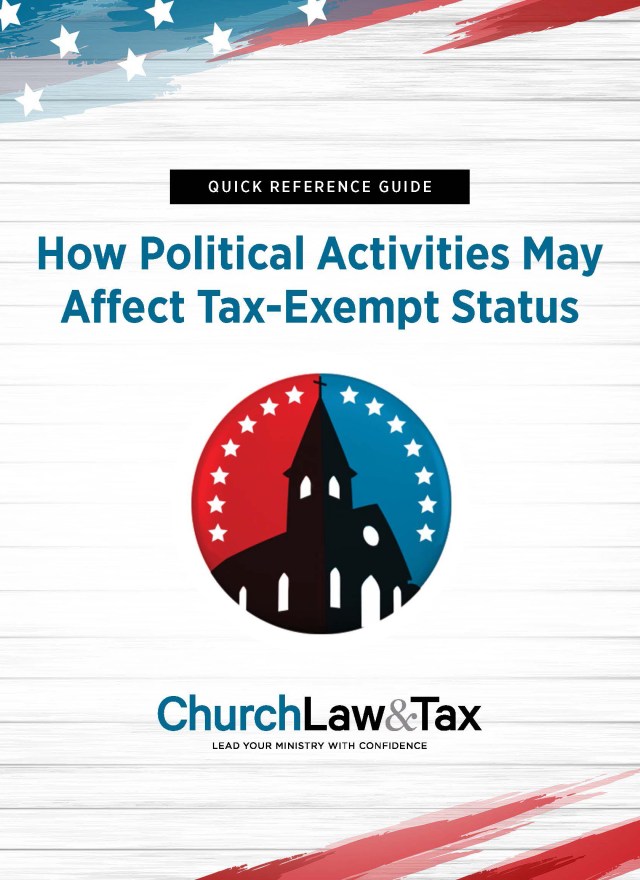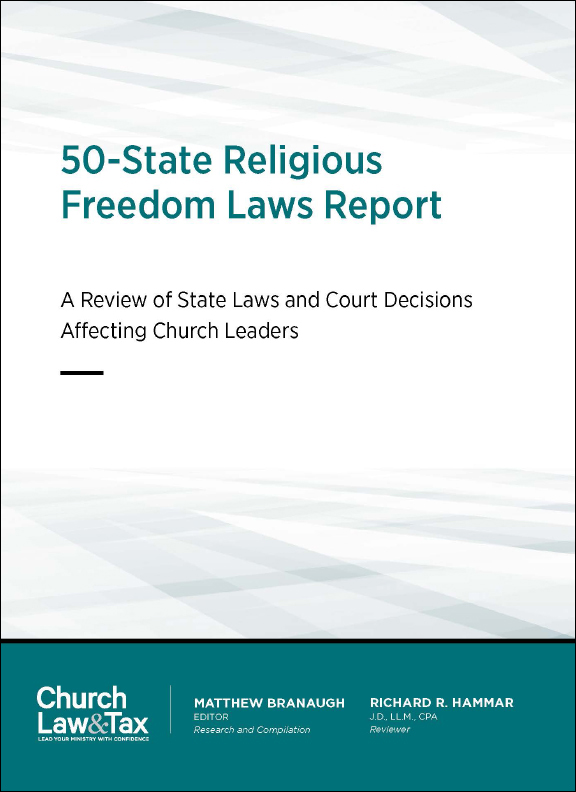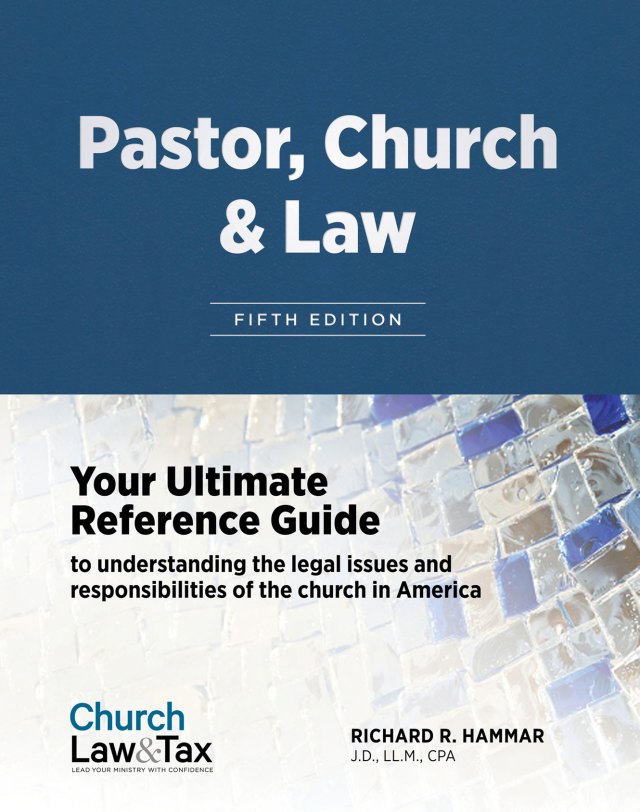The role of religion in public schools is a hotly debated topic and one that state and federal courts address regularly. At issue, of course, is the First Amendment’s prohibition of government-sponsored religion. Per the United States Supreme Court, the First Amendment mandates that many religious activities remain absent from public schools.
Nevertheless, via a program known as “released time,” public school students may receive religious instruction during the school day. Put simply, through released-time programs, religious institutions like churches may, with parental permission, provide instruction off campus to public school students for a set amount of time each week.
Background and Constitutionality
Although released-time programs have existed since the early 1900s, two mid-twentieth-century United States Supreme Court decisions—Zorach v. Clauson, 343 U.S. 306 (1952), and McCollum v. Board of Education, 333 U.S. 203 (1948)—increased the concept’s notoriety.
In Zorach v. Clauson, the Supreme Court examined a New York law that allowed public schools to release students to religious centers for one hour each week, provided the students’ parents submitted a written request for such release. In upholding the law, the Court emphasized that the state’s released-time program was constitutional because religious instruction was not incorporated into public school classrooms, public funds were not expended to support or promote the program, and outside of collecting permission slips, schools did not encourage participation in the program. By highlighting these characteristics, the Court distinguished the program from one in Illinois that it had invalidated in a prior case—McCollum v. Board of Education. There, religious teachers provided instruction in public school classrooms, and the Court deemed the practice unconstitutional because it “utilize[ed] … the tax-established and tax-supported public school system to aid religious groups to spread their faith.” In sum, Zorach and McCollum establish that released-time programs are constitutional, provided they operate free of financial assistance and extensive operational support from the public school system.
Building on Zorach and McCollum, state statutes as well as state and federal court decisions delineate specific parameters under which religious institutions and schools must operate to maintain a released-time program that comports with the First Amendment. This article addresses some of these guidelines.
State Statutes
Religious institutions looking to coordinate with local public schools should begin by consulting state statutes and regulations governing school attendance and released-time programs. Some states provide stipulations that are relatively detailed. Others offer little, if any, guidance. Regardless, an awareness of existing policies is key.
Generally, a state legislature’s website houses a current version of the state code of laws. Locating the section that governs education and then searching for key words such as “attendance” and “religious instruction” should yield the applicable statutes.
Example. Wisconsin
Wisconsin’s attendance law requires that all children “between the ages of 6 and 18 … attend school regularly during the full period and hours, religious holidays excepted, that the public, private, or tribal school in which the child is enrolled is in session.” Wis Stat. § 118.15.
Wisconsin has also stipulated, however, that “any school board shall, without approval of the state superintendent, permit pupils with written permission of a parent or guardian to be absent from school at least 60 minutes but not more than 180 minutes per week to obtain religious instruction outside the school during the required school period.” Wis. Stat. § 118.155.
The statute that permits students to be released for receipt of religious instruction also delineates how attendance should be ensured and reported, who is responsible for determining the time allotted for religious instruction, and whether the school district assumes any liability for students while they are at released-time activities.
Example. Pennsylvania
Pennsylvania’s attendance law mandates that “every child of compulsory school age having a legal residence in [Pennsylvania] … is required to attend a day school in which the subjects and activities prescribed by the State Board of Education are taught in the English language.” 24 Pa. Stat. Ann. § 13-1327.
But Pennsylvania law also specifies that “[t]he superintendent of the school district shall, upon the written request of a parent …, excuse any student who is the child of that parent … from school attendance for a total of not more than thirty-six (36) hours per school year in order to attend classes for religious instruction: Provided, however, that the request shall identify and describe the instruction, and the dates and hours for which the absence is requested and that the parent … shall, following each such absence, furnish in writing to the superintendent of the school district a statement attesting that the child did in fact attend the instruction and the dates and hours upon which such attendance took place.” 24 Pa. Stat. Ann § 15-1546.
Key Principles
In addition to researching the parameters outlined in state statutes and regulations, religious institutions conducting released-time programs should be aware of various state and federal court decisions discussing the constitutionality of specific programs. Although these decisions are directly applicable only in the geographic area where the deciding court has jurisdiction, the principles they announce provide guidance nonetheless.
1. Location
Religious instruction should take place off campus, in a location that gives no appearance of official involvement by the public school system.
Example. In Indiana, a public school allowed a religious institution to conduct a released-time program in a portable trailer on school grounds. The institution owned the trailer, transported it to and from the school, and paid for the utility costs associated with its operation. Further, the outside of the trailer did not display any religious iconography or markings. Nevertheless, a federal district court ruled that operating a released-time program in this manner violated the First Amendment because locating the program on school grounds conveyed a message of endorsement by the school. H.S. v. Huntington Cnty. Cmty. Sch. Corp., 616 F. Supp. 2d 863 (N.D. Ind. 2009).
Example. In New York, two religious institutions, one across the street from a public school and another next door to the school, offered instruction through a released-time program. A federal court of appeals ruled that even though the instruction was offered in close proximity to the school, the program comported with the First Amendment because it took place completely off campus and involved no taxpayer funds. Pierce v. Sullivan W. Cent. Sch. Dist., 379 F.3d 56 (2d Cir. 2004).
2. Promotion
Religious institutions’ recruitment efforts should not require public school personnel to initiate conversations about the program or make use of school classrooms or assembly areas where students are a “captive audience.”
Example. In South Carolina, a public school allowed a religious organization to supply flyers about released time to the school’s guidance counselors and to set up an informational table at the school’s annual open house. A federal court of appeals ruled that these methods of promotion did not violate the First Amendment because (1) the flyers were “kept behind the counselors’ desks and distributed to parents and students only after [they] expressed an interest,” and (2) the school permitted nonreligious organizations to also distribute information at the open house. Moss v. Spartanburg Cnty., 683 F.3d 599 (4th Cir. 2012).
Example. In Indiana, a public school allowed a religious institution to promote its released-time program via a one-hour lunch time presentation, where it distributed pamphlets. A federal district court ruled that by allowing the institution to promote its program in this manner, the school communicated an endorsement of religion in violation of the First Amendment. Moore v. Metro. Sch. Dist. of Perry Twp., No. IP 00-1859-C-M/S, 2001 WL 243292 (S.D. Ind. Feb. 7, 2001).
Example. In West Virginia, a public school permitted instructors from a religious organization to enter classrooms and distribute enrollment cards for a released-time program. Teachers employed by the school encouraged students to complete and return the cards. A federal district court ruled that these practices violated the First Amendment; personnel of religious institutions should not enter classrooms to recruit students, nor should school employees take an “active part” in the recruitment or enrollment process. Doe v. Shenandoah Cnty. Sch. Bd., 737 F. Supp. 913 (W.D. Va. 1990).
Example. In Virginia, a religious organization secured student enrollment lists from public schools and mailed cards to students’ parents, asking that they allow their children to participate in a released-time program. Children whose parents consented delivered the cards at school, where the religious organization collected them and notified the school regarding which students to release. School officials did not promote the program, nor did employees of the religious organization enter the school to recruit attendees. A federal court of appeals ruled that this method of publicizing released time comported with the First Amendment. Smith v. Smith, 523 F.2d 121 (4th Cir. 1975).
3. Curriculum
Religious institutions should take care that school personnel are not involved in developing or directing the released-time curriculum.
Example. In Indiana, a public school superintendent advised a religious organization operating a released-time program that its instruction “should not be offensive, should be as nondenominational as possible, and should not express extreme views.” A federal district court ruled that the supervisor’s advisory role, along with other aspects of the program, violated the First Amendment because it communicated religious endorsement by the school district. Moore v. Metro. Sch. Dist. of Perry Twp., No. IP 00-1859-C-M/S, 2001 WL 243292 (S.D. Ind. Feb. 7, 2001).
4. Attendance
Unless a state statute indicates otherwise, religious institutions should assume responsibility for tracking students’ attendance and reporting it to the appropriate public school employee.
Example. In Utah, a public school tracked students’ attendance at released time by sending a student to collect a list of individuals who had registered for the program and then failed to attend. A federal court of appeals ruled that this method of monitoring attendance was problematic because it required more involvement by the school than necessary. The court suggested that the school “require released-time personnel to transmit attendance reports to the public school.” Lanner v. Wimmer, 662 F.2d 1349 (10th Cir. 1981).
Conclusion
Religious institutions seeking to reach out to children and teens have found released-time programs a successful avenue. Institutions must remain aware, however, of the constitutional implications of such programs. Such awareness, combined with a commitment to operating a constitutionally sound program, will maintain credibility and long-term effectiveness.
A federal court of appeals has aptly noted that “any released-time program, by its very nature, presents the potential for unconstitutional entanglement of public schools with religious institutions. For this reason, the least entangling administrative alternatives must be elected when a released-time program is instituted.” Lanner v. Wimmer, 662 F.2d 1349 (10th Cir. 1981).
Church Law & Tax Report is published six times a year by Christianity Today International, 465 Gundersen Dr. Carol Stream, IL 60188. (800) 222-1840. © 2013 Christianity Today International. editor@churchlawandtax.com All rights reserved. This publication is designed to provide accurate and authoritative information in regard to the subject matter covered. It is sold with the understanding that the publisher is not engaged in rendering legal, accounting, or other professional service. If legal advice or other expert assistance is required, the services of a competent professional person should be sought. “From a Declaration of Principles jointly adopted by a Committee of the American Bar Association and a Committee of Publishers and Associations.” Annual subscription: $69. Subscription correspondence: Church Law & Tax Report, PO Box 37012, Boone, IA 50037-0012.



